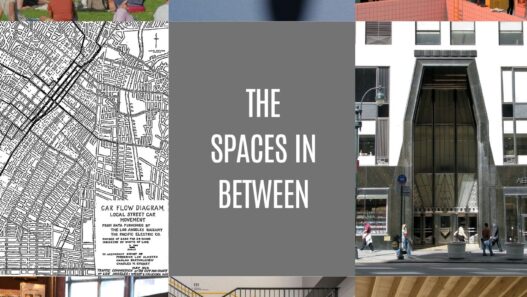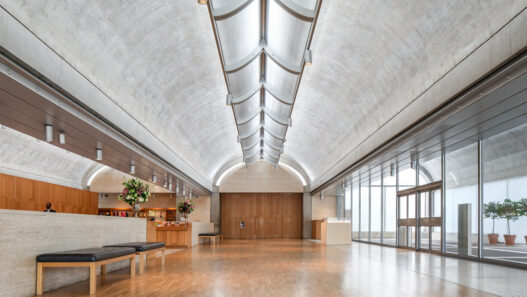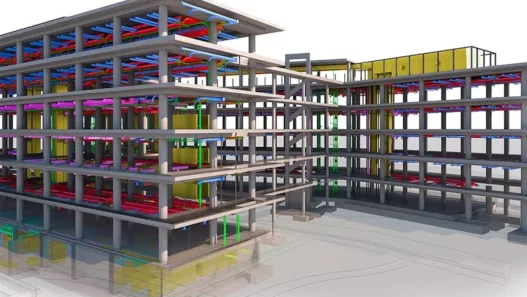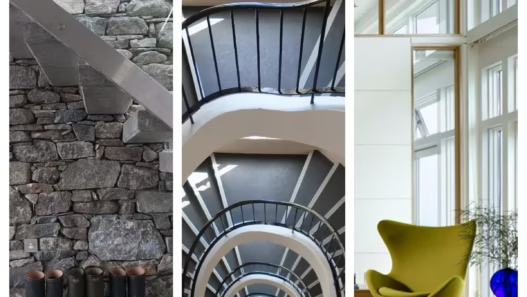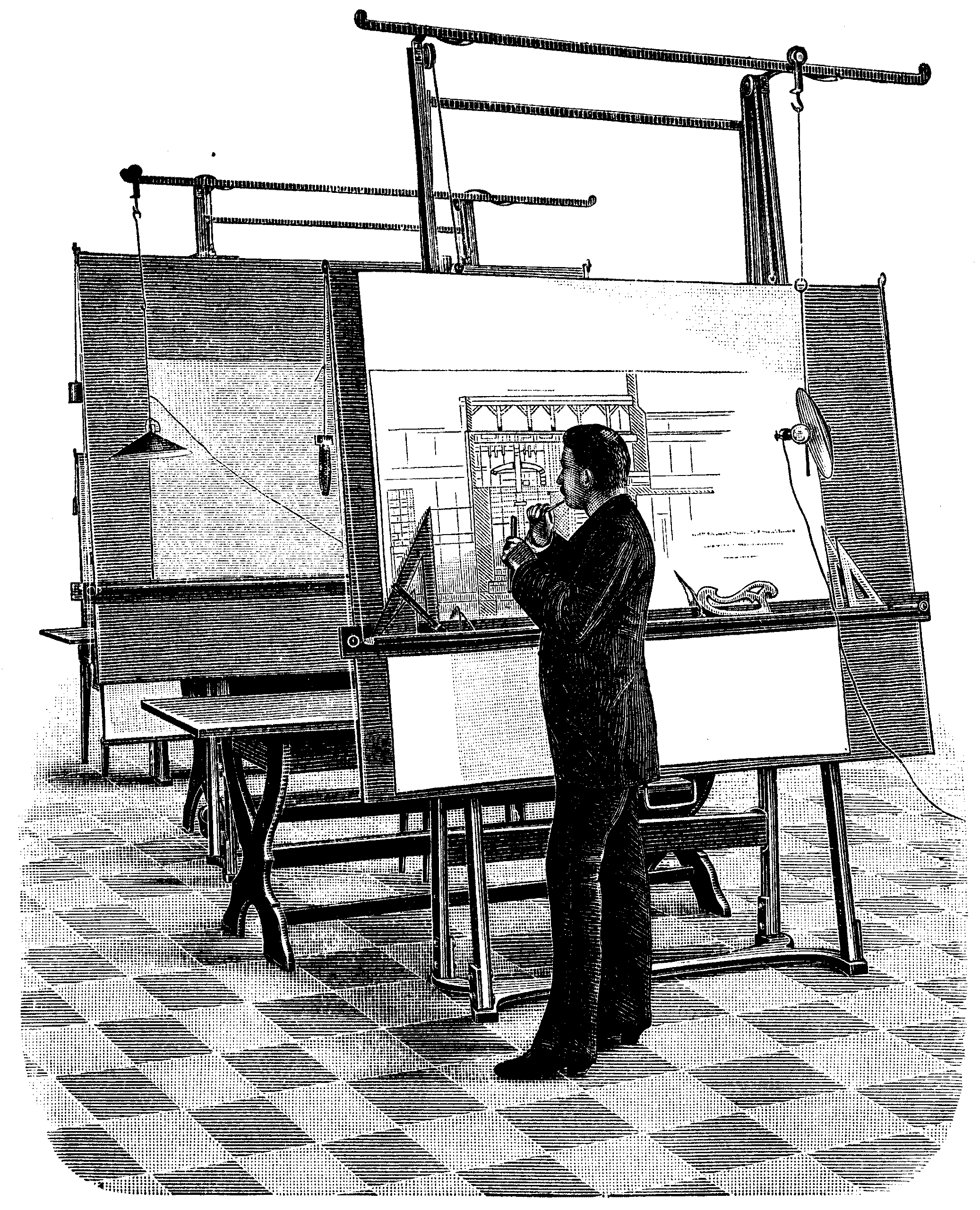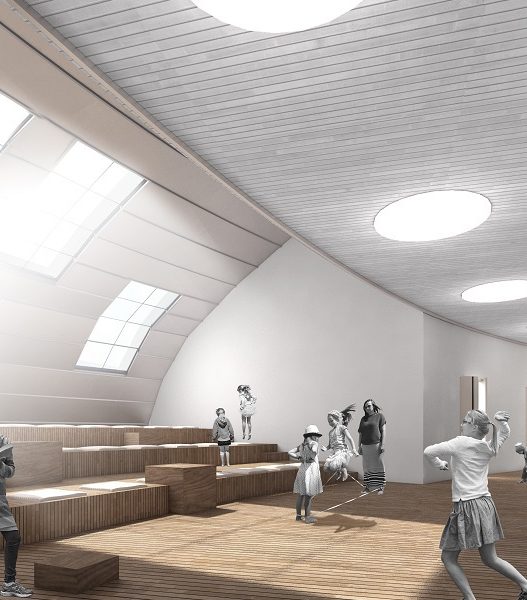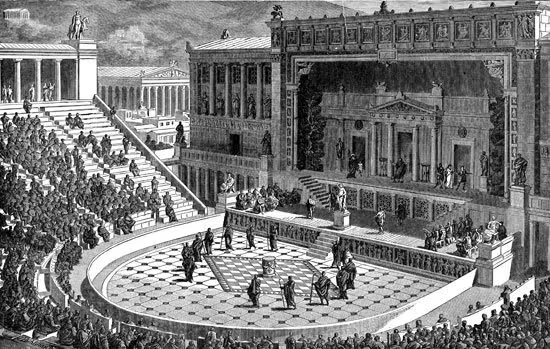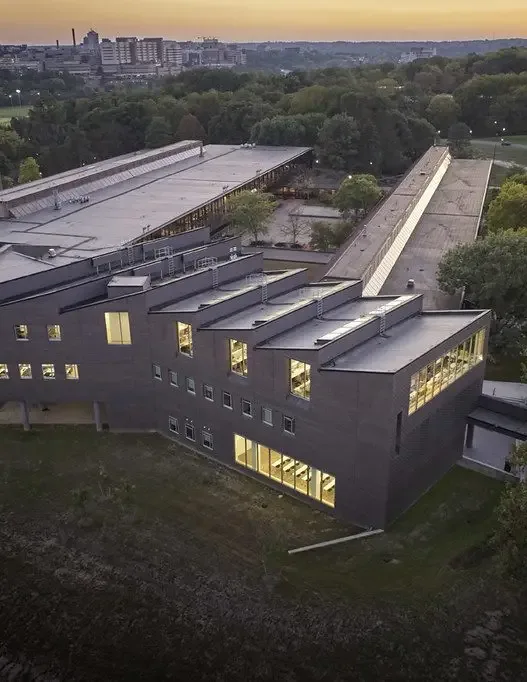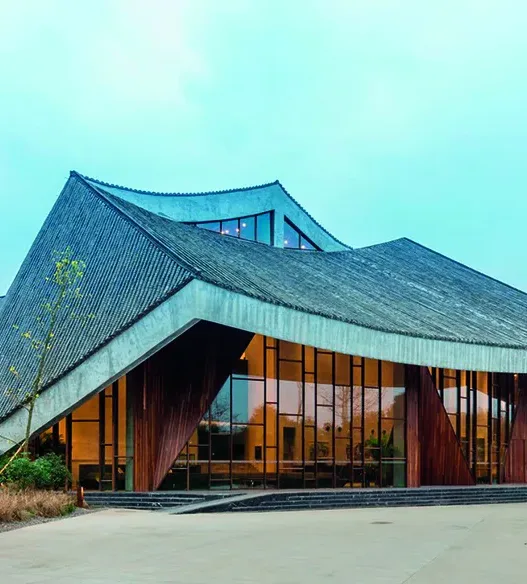The Massachusetts Institute of Technology (MIT) School of Architecture stands as a beacon of innovation and creativity in the world of architecture. Located in Cambridge, Massachusetts, the school has earned a reputation for blending cutting-edge technology with design principles that honor the past. This institution not only educates the architects of the future, but also shapes the discourse around architecture through research, collaboration, and the exploration of new materials and techniques. The school’s commitment to integrating technology into timeless design makes it a major player in the evolution of modern architecture.

Institution Overview
Founded in 1865, the MIT School of Architecture is part of the larger MIT ecosystem, known for its emphasis on science and technology. The school offers a range of degree programs, including bachelor’s, master’s, and doctoral degrees, that focus not only on design but also on the broader impact of architecture on society. Students are encouraged to think critically about how architecture impacts human experience, sustainability, and civic engagement. The curriculum is rigorous and interdisciplinary, often incorporating engineering, urban planning, and the arts, preparing graduates for the multifaceted challenges they will face in their careers.
Historical Context
The history of the MIT School of Architecture reflects broader changes in architectural thought and practice over the past century. Initially, the school emphasized classical architectural principles, but as the 20th century progressed, it began to embrace modernism and later postmodernism. This change was influenced by broader societal changes and advances in technology. Innovative construction techniques, as well as the use of new materials such as concrete and steel, allowed architects to explore new forms and functions. The school has continually adapted to these changes, fostering an environment in which students can experiment with new technologies while respecting the historical context of their discipline.
Architectural Philosophy
At the core of the MIT School of Architecture’s philosophy is the belief that architecture should respond to the needs of society while pushing the boundaries of creativity. Faculty and students explore ideas around sustainability, social equity, and cultural relevance to design spaces that are not only aesthetically pleasing but also functional and inclusive. This philosophy fosters a dialogue between the past and the future, where timeless design principles are applied to contemporary challenges. The school’s commitment to research and innovation means that students are constantly engaged with the latest technological advances and use them to inform their design processes.
Its Importance in Modern Architecture
The MIT School of Architecture has played a pivotal role in shaping modern architecture. Its influence can be seen in the way architects today approach design and integrate technology with environmental concerns. The school has produced many influential architects and designers who have redefined urban landscapes and challenged traditional notions of space. The school is an important participant in the global architecture dialogue, actively contributing to discussions on urbanism, sustainability, and social development through research initiatives and public projects.
Key Figures in Its Development
Throughout its history, the MIT School of Architecture has hosted many key figures who have significantly influenced the field of architecture. Notable alumni and faculty members such as I. M. Pei, Frank Gehry, and Zaha Hadid have contributed to a legacy of innovative designs that blend artistic vision with practical application. These architects have not only created iconic structures, they have also influenced educational practices within the school, inspiring new generations of architects to think broadly about their work. Their contributions underscore the importance of mentoring and collaboration in developing creative talent and ensure that the school remains at the forefront of architectural education and practice.
In short, the MIT School of Architecture is more than an educational institution; it is a vibrant community representing the intersection of technology and design. Its historical roots, philosophical foundations, and commitment to innovation make it a cornerstone of modern architecture and shaping the future of the built environment.
The MIT School of Architecture has long been at the forefront of innovation and creative thinking in architecture. Standing at the intersection of technology and design, the school explores how these two fields can come together to create spaces that are not only functional but also aesthetically pleasing. The school has produced a number of architects and designers who have influenced the world with their groundbreaking work. As we delve into the details of architectural design and features, we will reveal how the MIT School of Architecture takes a forward-thinking approach that honors tradition while embracing modernity.
Architectural Design and Features
Architectural design encompasses more than the physical structure of a building; it reflects cultural values, environmental considerations, and technological advances. At MIT, this philosophy is evident in a variety of design elements that showcase structural innovations, material choices, sustainability practices, interior design, and landscaping.
Structural Innovations
The field of structural innovation is where creativity meets engineering. At MIT, students and faculty are encouraged to push the boundaries of what’s possible. This is evident in projects that use cutting-edge technologies like parametric design and advanced computational modeling. For example, the use of digital fabrication techniques like 3D printing is revolutionizing the way architects conceptualize and construct buildings. This not only allows for more complex designs, but also increases precision and reduces waste. In addition, the exploration of new structural systems like tensile structures and adaptable facades exemplifies how architecture can respond to changing environmental conditions while maintaining aesthetic appeal.
Materials Used
Material selection plays a crucial role in architectural design, affecting a building’s durability, aesthetic quality, and environmental impact. At MIT, there is a strong emphasis on exploring both traditional and innovative materials. From lightweight composites to recycled materials, students learn to select materials that align with their design vision and sustainability goals. Notable examples include the use of transparent solar panels that blend seamlessly into a building’s façade, enabling energy production without sacrificing visual appeal. This exploration of materials not only enriches the design process, but also lays the groundwork for future architectural practices that prioritize environmental friendliness.
Sustainability Practices
Sustainability is a core tenet of architecture education at MIT. The school instills in its students a deep understanding of how buildings can coexist harmoniously with their surroundings. This includes incorporating passive design strategies that optimize energy efficiency, such as natural ventilation and daylighting. Real-world applications of these practices can be seen in projects like the Edgerton Center, which uses a green roof and rainwater collection systems to minimize its ecological footprint. MIT students who prioritize sustainability are equipped to tackle the pressing environmental challenges of our time by designing buildings that are not only beautiful but also responsible.
Interior Design Elements
Interior design is another critical aspect of architectural education. At MIT, the focus is on creating spaces that enhance the human experience. This includes understanding how light, color, and texture affect mood and functionality. By exploring the relationship between interior spaces and their occupants, students learn to design environments that foster creativity and well-being. For example, open-plan layouts that encourage collaboration are increasingly popular in educational and workplace environments. The integration of flexible furniture and movable walls allows spaces to adapt to different needs, embodying the dynamic spirit of modern architecture.
Landscaping and Environmental Planning
The relationship between a building and its surroundings is crucial to architectural design. At MIT, students are taught to view the landscape as an extension of their design, creating harmonious transitions between interior and exterior spaces. This is evident in projects that include native plantings, water features, and outdoor gathering spaces that encourage community interaction. A notable example of this is the MIT Media Lab, which features a beautifully landscaped courtyard that serves as a focal point for collaboration and creativity. By integrating the landscape into their designs, architects can enhance the overall aesthetic and functional quality of their projects, contributing to a sense of place and belonging.
As a result, the MIT School of Architecture exemplifies a comprehensive approach to architectural design that integrates technology with timeless principles. Through structural innovation, thoughtful material choices, sustainable practices, attention to interior design, and a keen awareness of the landscape, students are prepared to shape the future of architecture. Their work not only reflects the complexities of modern life, but also honors enduring values such as beauty, functionality, and responsibility in the built environment.
The Massachusetts Institute of Technology (MIT) School of Architecture is at the forefront of architectural education by blending innovative technology with timeless design principles. This unique intersection is not only shaping the future of architecture, but also influencing how we interact with our built environment. As we delve into the realm of technological integration in architecture, we will explore several aspects of how these advances are reshaping the industry.
Technological Integration
Technological integration in architecture is not just about using the latest gadgets; it is about improving the relationship between people and their environment. This integration encompasses a wide range of technologies that enhance functionality, sustainability, and aesthetic appeal. As architects and designers leverage these tools, they are creating spaces that are not only visually striking but also responsive to the needs of their occupants.
Smart Building Technologies
Smart building technologies represent a significant leap forward in the way we perceive and interact with architectural spaces. These technologies involve the use of sensors, automation, and data analytics to create environments that can adapt to changing conditions and user preferences. For example, buildings equipped with smart systems can automatically adjust lighting, temperature, and ventilation based on occupancy and weather patterns. This not only increases comfort, but also contributes to sustainability efforts by reducing energy consumption.
Consider a contemporary office building that uses smart technology to optimize energy use. By integrating sensors that detect when rooms are occupied, the building can automatically turn off lights and adjust heating or cooling systems in unused spaces. This proactive approach not only reduces operating costs, but also aligns with the increasing demand for environmentally friendly practices in construction.
Use of Artificial Intelligence in Design
Artificial Intelligence (AI) is revolutionizing the design process in architecture. By analyzing large amounts of data, AI tools can help architects make informed decisions about materials, structural integrity, and spatial arrangements. The technology can also help architects explore innovative solutions more efficiently by generating design options based on specific criteria.
For example, AI algorithms can analyze historical climate data to recommend the most suitable materials for a building in a given location, taking into account factors such as temperature fluctuations and humidity levels. This results in designs that are not only aesthetically pleasing but also optimized for their environment, improving durability and performance.
Virtual Reality and Simulation
Virtual reality (VR) and simulation technologies are transforming the way architects present their designs and interact with clients. These tools allow architects to create immersive environments where clients can virtually tour a space before it is built. This experience allows stakeholders to visualize design options, understand spatial relationships, and make informed decisions.
Imagine a family considering the layout of their new home. With VR, they can step into a realistic simulation of the space, experiencing how natural light flows through rooms at different times of the day or how furniture will fit into certain spaces. This interactive process not only enables better communication between architects and clients, but also leads to more satisfying design results.
Digital Production Techniques
Digital manufacturing techniques like 3D printing and CNC machining are revolutionizing construction and design processes. These technologies allow for the precision fabrication of architectural components, allowing architects to experiment with complex forms and intricate details that are difficult to achieve with traditional methods.
For example, a firm could use 3D printing to create customized building elements tailored to specific project requirements, such as decorative facades or structural components. This not only reduces material waste, but also allows for rapid prototyping, which can significantly shorten project timelines. As architects adopt these techniques, they are pushing the boundaries of what is possible in design and construction.
Future Technologies in Architecture
Looking ahead, the future of architecture is set to be shaped by a range of new technologies. Innovations in areas such as sustainable materials, energy-efficient systems, and advanced building automation will continue to redefine the architectural landscape. The integration of biomimicry, where design is inspired by nature, promises to lead to buildings that are in harmony with their environment.
Additionally, as the world becomes more connected, architects will increasingly leverage big data and the Internet of Things (IoT) to create responsive, adaptable spaces that improve the quality of life of their residents. The ability to monitor and respond to user needs in real time will transform the role of architects from mere designers to curators of experiences.
Ultimately, the MIT School of Architecture exemplifies the exciting potential that comes from integrating technology with timeless design principles. As we explore smart building technologies, artificial intelligence, virtual reality, digital fabrication, and future innovations in design, it is becoming clear that the future of architecture is not just about creating buildings; it is about creating experiences that resonate with the people who live in them.
Impact on Education and Research
The MIT School of Architecture stands out as a beacon of innovation, where the convergence of technology and design creates a unique educational environment. This institution is not only shaping the architects of tomorrow, but also making significant contributions to the broader field of architecture through cutting-edge research and collaboration. In this section, we will examine how the school impacts education and research, focusing on its curriculum, research opportunities, interdisciplinary collaboration, student projects, and graduate success.
Curriculum Overview
Central to the MIT School of Architecture's approach is a curriculum designed to encourage creative thinking alongside technical proficiency. The program emphasizes the balance between design theory and practical application. Students are introduced to a variety of architectural styles and historical contexts, providing an understanding of the evolution of architecture over time.
Courses cover core topics such as sustainable design, urban planning, and digital fabrication that integrate modern technology with architectural principles. The curriculum encourages students to participate in hands-on projects, allowing them to apply theoretical knowledge to real-world scenarios. This experiential learning not only develops students’ design skills but also prepares them to tackle complex challenges in architecture.
Research Opportunities
Research at the MIT School of Architecture is as diverse as the field itself. The school fosters an environment where students and faculty can explore innovative ideas that address pressing societal problems. Research opportunities span a variety of themes, including urban resilience, climate-smart design, and smart cities.
Students have access to state-of-the-art facilities and resources that allow them to conduct experiments and develop prototypes. Collaborative research projects often involve partnerships with local communities, government agencies, and industry stakeholders. This involvement not only enriches the research experience, but also ensures that findings have practical applications, promoting a more sustainable and equitable built environment.
Collaboration with Other Disciplines
One of the distinguishing features of the MIT School of Architecture is its emphasis on interdisciplinary collaboration. The school's location within a leading technology institution encourages partnerships with other departments, such as engineering, computer science, and urban studies. This cross-pollination of ideas encourages a holistic approach to architectural challenges.
For example, architects can collaborate with computer scientists to develop advanced modeling techniques or work with urban planners to create more livable cities. These collaborations enhance the learning experience by giving students a broader perspective on how architecture intersects with various fields. By breaking down traditional silos, MIT prepares its students to think critically and innovate across disciplines.
Student Projects and Innovations
The creativity and ingenuity of MIT Architecture students shines through in their projects. From designing sustainable housing solutions to creating interactive installations, students are encouraged to push the boundaries of traditional design. Many projects are designed to address real-world issues, such as climate change and urbanization.
Students frequently participate in competitions and exhibitions to showcase their work to a wider audience. These platforms provide critical feedback and networking opportunities, allowing them to develop their ideas and gain visibility within the architectural community. The school also emphasizes the importance of innovation, inspiring students to think outside the box and develop groundbreaking solutions that can impact the future of architecture.
Success Stories of Graduates
The impact of the MIT School of Architecture extends far beyond graduation. Its graduates have achieved remarkable success in a variety of fields, from designing iconic buildings to leading innovative design firms. Many of our graduates hold influential positions in academia, government, and the private sector, and continue to shape the architecture landscape.
Notable alumni have made significant contributions to the integration of technology in sustainable architecture, urban design, and building practices. Their work not only reflects the values instilled during their education, but also serves as an inspiration for current students. The success of these alumni highlights the effectiveness of the school's curriculum and research initiatives and demonstrates how MIT Architecture continues to influence the future of the profession.
As a result, the MIT School of Architecture remains at the forefront of architectural education and research by blending technology with timeless design principles. Its innovative curriculum, extensive research opportunities, collaborative spirit, dynamic student projects, and accomplished graduates contribute to an environment that nurtures creativity and prepares the next generation of architects to make a meaningful impact in the world.
Social and Cultural Participation
At the core of the MIT School of Architecture is a deep commitment to community and cultural engagement. This commitment not only enhances the educational experience of students, but also fosters meaningful connections between architecture and the diverse communities it serves. Through a variety of initiatives, the School actively seeks to bridge the gap between academic research and real-world practice, creating a dynamic environment where creativity and community thrive.
Public Programs and Classes
Public programs and lectures at the MIT School of Architecture serve as vital platforms for exchange and dialogue. These events bring together renowned architects, scholars, and practitioners to share their views on contemporary challenges in architecture and urban design. Participants are exposed to innovative ideas that challenge traditional perspectives and foster a vibrant intellectual community. Discussions often explore the intersection of technology and design, emphasizing how new tools can shape sustainable and inclusive urban environments. By encouraging public participation, these programs foster a culture of learning that extends beyond the classroom and invites diverse voices to contribute to the architectural discourse.
Community Projects
Community projects are a cornerstone of the MIT School of Architecture’s engagement strategy. Students collaborate with local residents and organizations to address pressing social issues through design. These projects often focus on improving public spaces, increasing accessibility, or revitalizing neglected neighborhoods. For example, students might work to transform vacant lots into community gardens or design affordable housing that reflects the needs and desires of its residents. This hands-on approach not only empowers students to apply their skills in real-world contexts, but also reinforces the importance of architecture as a tool for social change. Through these collaborations, the school helps build stronger, more resilient communities and demonstrates that architecture is inherently connected to the human experience.
Art and Architecture Exhibitions
Art and architecture exhibitions play an important role in showcasing innovative work produced at the MIT School of Architecture. These exhibitions often reflect the interdisciplinary nature of the school by highlighting student projects, faculty research, and collaborations with artists. By presenting their work in a public forum, students engage with a broader audience and spark conversations about the role of architecture in society. Exhibitions can range from interactive installations to curated displays that challenge viewers to reconsider their perceptions of space and design. This exposure not only enriches the cultural landscape of society, it also inspires future generations of architects to explore the interplay between art and architecture.
Partnerships with Local Organizations
The MIT School of Architecture actively seeks partnerships with local organizations to increase its impact in the community. Collaborating with nonprofits, urban planners, and cultural institutions allows the school to align its resources with community needs. These partnerships often lead to joint initiatives that address issues such as urban sustainability, historic preservation, and social equity. For example, students may work with a local housing organization to design new strategies for affordable living. These collaborative efforts not only enhance students’ educational experiences, but also demonstrate how architecture can be a catalyst for social development by contributing to meaningful change in society.
Global Outreach Initiatives
Beyond local engagement, the MIT School of Architecture takes a global perspective through outreach initiatives that address worldwide challenges. These initiatives often involve students and faculty working on projects in developing countries, applying their design expertise to improve living conditions. Students gain invaluable insights into different cultures and contexts by participating in workshops, design-build projects, and research collaborations abroad. These experiences deepen their understanding of how architecture can respond to global challenges such as climate change and urbanization. Through this global lens, the school not only prepares its students for the complexities of the modern world, but also reinforces the idea that architecture has the power to transcend borders and ensure a more equitable future for all.
At its core, the MIT School of Architecture's commitment to community and cultural engagement enriches both its academic environment and the broader societal landscape. Integrating technology with timeless design principles, the school advances a holistic approach to architecture that recognizes the importance of place, culture, and community in shaping the built environment.
6. Conclusion and Future Recommendations
The MIT School of Architecture stands as a beacon of innovation and tradition in architecture. Embodying a unique blend of cutting-edge technology and timeless design principles, the school is shaping the future of how we build and interact with our environments. In reflecting on the school’s journey and impact, it’s important to explore the key points that define its current state, its challenges, and its vision for the future.
Summary of Key Points
Throughout its history, the MIT School of Architecture has emphasized the importance of integrating technology into design. This approach allows students to utilize advanced tools such as computational design and digital fabrication while adhering to the fundamental principles of architecture. The school encourages a collaborative environment where interdisciplinary ideas thrive, encouraging students to explore how architecture can respond to societal needs and environmental challenges.
By encouraging creativity and critical thinking, MIT prepares its graduates to become leaders in the field. The curriculum is designed to impart not only technical skills but also a deep understanding of the cultural, social, and environmental contexts in which architecture operates. This holistic approach equips students to create spaces that are not only functional but also meaningful.
Challenges Facing the School
Despite its many strengths, the MIT School of Architecture faces several challenges in the ever-evolving world of architecture and design. One major problem is the rapid pace of technological advancement. While embracing new tools is essential, there is a risk of prioritizing technology over the human aspects of design. Finding a balance between innovation and the emotional resonance of spaces is crucial.
The school must also meet the growing demand for sustainable design practices. Climate change and urbanization are urgent issues that require architects to rethink traditional methods. MIT has the opportunity to lead in this area, but it will require a sustained commitment to research and adaptation.
Moreover, accessibility of architectural education remains a challenge. Ensuring that diverse voices are included in architectural discourse is vital to creating inclusive spaces. MIT should actively work to expand access and promote diversity among students and faculty.
Future Vision
Looking to the future, the MIT School of Architecture’s vision is one of continued innovation and inclusivity. The school aims to be at the forefront of architectural research that addresses pressing global issues. This includes focusing on sustainable practices, smart cities, and resilient design in response to climate challenges. By integrating these concepts into the curriculum, MIT can empower future architects to create environments that foster well-being and sustainability.
There is also a desire to develop collaboration with other disciplines such as engineering, urban planning and social sciences. This interdisciplinary approach will enrich the educational experience and provide more comprehensive solutions to complex problems.
The school also envisions expanding its outreach efforts to attract diverse students. By fostering an inclusive environment, MIT can tap into a wealth of perspectives that will foster creativity and innovation in the practice of architecture.
Its Role in Shaping Future Architects
The MIT School of Architecture plays a pivotal role in shaping the next generation of architects. Instilling a strong sense of responsibility toward society and the environment, the school encourages students to see themselves as agents of change. An emphasis on critical thinking and ethical considerations prepares graduates to face the multifaceted challenges of modern architecture.
MIT’s commitment to hands-on learning and real-world applications is another important aspect of its impact. Through projects that engage communities and address real problems, students gain invaluable experience that extends beyond the classroom. This hands-on approach not only develops their skills, but also instills a sense of purpose and responsibility in their studies.
As future architects begin their careers, they will carry with them the values and knowledge they learned at MIT and will be prepared to make significant contributions to the built environment.
Final Thoughts
As a result, the MIT School of Architecture stands at the intersection of tradition and innovation. Its commitment to integrating technology with timeless design principles ensures that the school remains a leader in architectural education. While there are challenges ahead, the school’s vision for the future is one of flexibility, adaptability, and inclusiveness. By continuing to nurture the minds of aspiring architects, MIT is poised to shape a built environment that reflects the complexities and aspirations of our society. As we look ahead, it is clear that the school will continue to inspire and equip future generations to create a more thoughtful and sustainable world.
Discover more from Dök Architecture
Subscribe to get the latest posts sent to your email.



